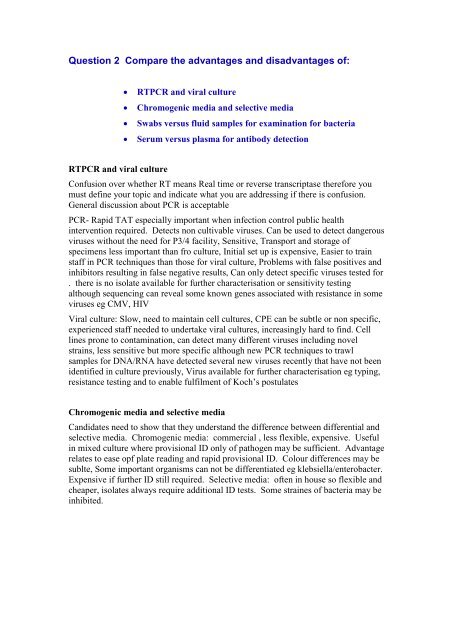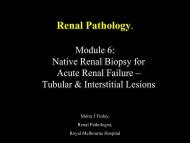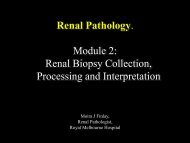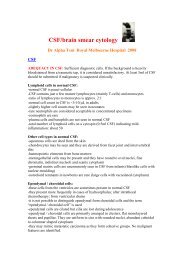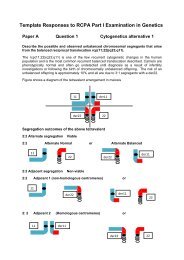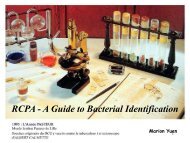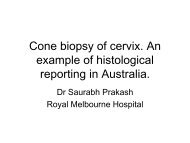Model Answers Microbiology Written examinations 2007 - RCPA
Model Answers Microbiology Written examinations 2007 - RCPA
Model Answers Microbiology Written examinations 2007 - RCPA
Create successful ePaper yourself
Turn your PDF publications into a flip-book with our unique Google optimized e-Paper software.
Question 2 Compare the advantages and disadvantages of:<br />
<br />
<br />
<br />
<br />
RTPCR and viral culture<br />
Chromogenic media and selective media<br />
Swabs versus fluid samples for examination for bacteria<br />
Serum versus plasma for antibody detection<br />
RTPCR and viral culture<br />
Confusion over whether RT means Real time or reverse transcriptase therefore you<br />
must define your topic and indicate what you are addressing if there is confusion.<br />
General discussion about PCR is acceptable<br />
PCR- Rapid TAT especially important when infection control public health<br />
intervention required. Detects non cultivable viruses. Can be used to detect dangerous<br />
viruses without the need for P3/4 facility, Sensitive, Transport and storage of<br />
specimens less important than fro culture, Initial set up is expensive, Easier to train<br />
staff in PCR techniques than those for viral culture, Problems with false positives and<br />
inhibitors resulting in false negative results, Can only detect specific viruses tested for<br />
. there is no isolate available for further characterisation or sensitivity testing<br />
although sequencing can reveal some known genes associated with resistance in some<br />
viruses eg CMV, HIV<br />
Viral culture: Slow, need to maintain cell cultures, CPE can be subtle or non specific,<br />
experienced staff needed to undertake viral cultures, increasingly hard to find. Cell<br />
lines prone to contamination, can detect many different viruses including novel<br />
strains, less sensitive but more specific although new PCR techniques to trawl<br />
samples for DNA/RNA have detected several new viruses recently that have not been<br />
identified in culture previously, Virus available for further characterisation eg typing,<br />
resistance testing and to enable fulfilment of Koch‟s postulates<br />
Chromogenic media and selective media<br />
Candidates need to show that they understand the difference between differential and<br />
selective media. Chromogenic media: commercial , less flexible, expensive. Useful<br />
in mixed culture where provisional ID only of pathogen may be sufficient. Advantage<br />
relates to ease opf plate reading and rapid provisional ID. Colour differences may be<br />
sublte, Some important organisms can not be differentiated eg klebsiella/enterobacter.<br />
Expensive if further ID still required. Selective media: often in house so flexible and<br />
cheaper, isolates always require additional ID tests. Some straines of bacteria may be<br />
inhibited.


